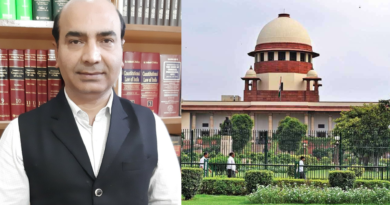Chief Justice DY Chandrachud Highlights Neglect of Mental Health and Well-Being Among District Judicial Officers
(Judicial Quest News Network)
31, August,2024
On August 31st, Chief Justice of India DY Chandrachud underscored the urgent need to address the mental health challenges faced by district judicial officers, given the intense work pressures they encounter. Speaking at the inaugural ceremony of the National Conference on the District Judiciary held at the Supreme Court, the CJI emphasized the necessity of integrating mental well-being into discussions about the judiciary’s functioning.
In his address, Chief Justice Chandrachud highlighted the multifaceted responsibilities of judicial officers, who deal with a broad spectrum of cases and the emotional burdens of the parties involved. He noted that these demands can significantly impact their mental health, making it crucial for judges to maintain a balance between their professional duties and personal well-being. The CJI acknowledged the emotional toll of facing the harsh realities of life in the courtroom and stressed that such experiences, including prolonged matrimonial disputes and the distress of the parties, can take a personal toll on judges.
The Chief Justice criticized the tendency to overlook mental health issues within the judiciary, stressing that they often do not receive the attention they deserve. He welcomed the inclusion of mental health and well-being discussions in the conference, emphasizing that such dialogues are essential for achieving a healthy work-life balance. The third session of the conference, dedicated to judicial wellness, will focus on holistic wellness, stress management, and improving the quality of life for judicial officers.
During his address, Chief Justice Chandrachud also shared a poignant anecdote about a young female judicial officer facing discrimination based on her age and gender. He urged the legal community to foster a supportive environment for younger judicial officers, acknowledging that such experiences can be discouraging and hinder their ability to perform their duties effectively.
Additionally, Chief Justice Chandrachud praised the district judiciary’s role, noting that judges not only administer justice but also manage court administration, oversee infrastructure development, and engage in community legal services. He highlighted significant advancements in technology within the Indian legal system, including the digitization of 46.48 crore pages of court records and the establishment of 714 District Court websites on the Government of India’s S3WaaS platform. The National Judicial Data Grid, managed by the National Informatics Centre, provides real-time data on over 4 crore cases across District and High Courts. The CJI also pointed out the substantial use of video conferencing for 2.3 crore cases at the district level.
The conference was further distinguished by the presence of Justice Sanjiv Khanna and Prime Minister Narendra Modi, who launched a commemorative coin and stamp marking 75 years since the establishment of the Supreme Court.
The district judiciary is the first point of contact for a citizen in search of justice. The district judiciary is a crucial component of the rule of law. The arc of pending cases is defined by a triangle or a pyramid, large at the base and tapering as we move upwards. Data on the NJDG reveals a basic truth – the district judiciary is not just the first but is also the final point of contact for citizens.
The reasons may be numerous – many citizens are unable to afford legal representation, they have a lack of awareness about statutory rights, and there are geographical difficulties in physically accessing courts. The quality of our work and the conditions in which we provide justice to citizens determine whether they have confidence in us and is a test of our own accountability to society.
The district judiciary is therefore called upon to shoulder tremendous responsibility and is aptly described as the ‘backbone of the judiciary’. The spine is the core of the nervous system. To sustain the spine of the legal system, we must stop calling the district judiciary the ‘subordinate’ judiciary. Seventy-five years after Independence, the time has come for us to bury one more relic of the British era – the colonial mindset of subordination.
I now turn to the data on the changing demography of the judiciary. An increasing number of women have been joining the district judiciary in the past few years. Women consisted of 58% of the total recruitment for Civil Judges in Rajasthan in 2023. 66% of the judicial officers appointed in Delhi in 2023 were women. In Uttar Pradesh, 54% of the appointments for Civil Judge (Junior Division) in the batch of 2022 were women.
In Kerala, 72% of the total number of judicial officers are women in the latest recruitment. These are a few examples which paint the picture of a promising judiciary of the future. The second session of the conference will address gender dynamics in the judiciary as well as the need to ensure an inclusive workplace.




